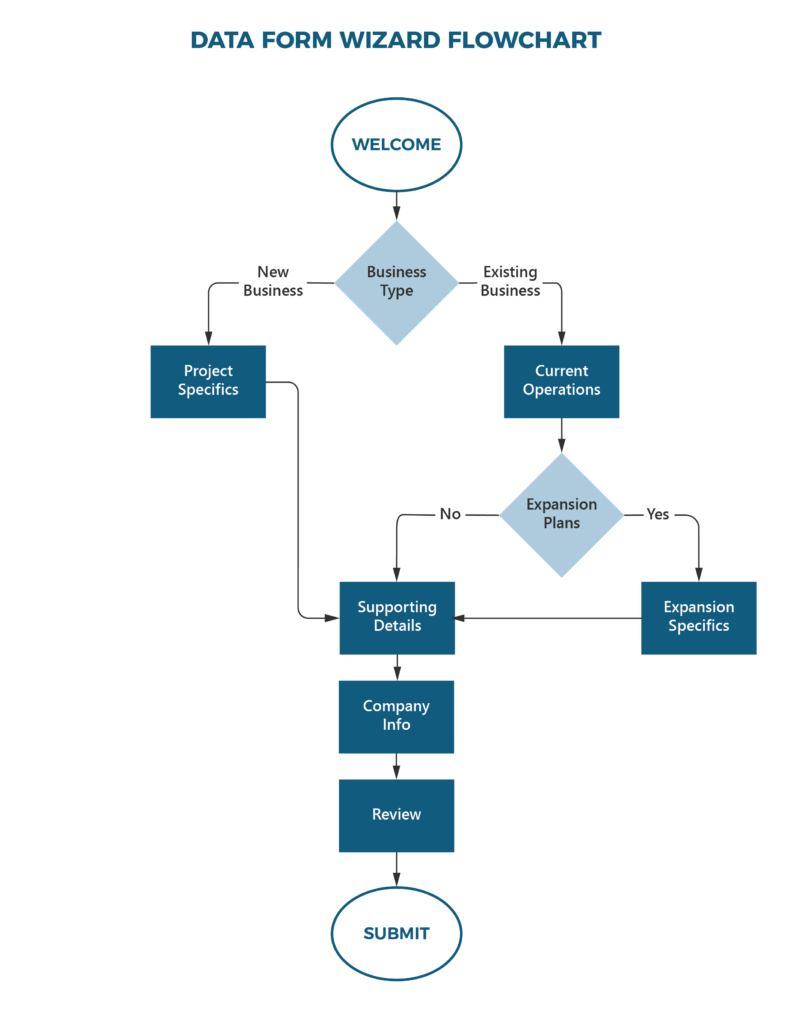How Can We Help?
Improve Your ED Project Questionnaire
Project data gathering done by economic developers is a mess.
A poorly designed and hard-to-complete questionnaire can frustrate your prospect and leave economic developers with confusing, incomplete, or illegible responses. With the benefit of hindsight, economic developers often notice how the questionnaire could have been improved for a specific project, only after it is too late. With years of experience gathering project data (and plenty of hindsight), I have some advice on how you can improve your ED project questionnaire.
Since 1993, Impact DataSource has evaluated thousands of prospective economic development projects for EDO’s and state and local governments. Over the years, I have often provided a rather utilitarian project data sheet to our clients to obtain the details we need to prepare an impact analysis. For our purposes, we tend to focus on things like the investment and hiring schedule so that we can estimate the impact on the local economy and new tax revenues.
Often times, our EDO clients provide us with their data gathering sheet that the prospect has already completed. These documents – which have names like “incentive application” or “economic development survey” – generally ask for information about the company and its plans. The documents come in various formats such as:
- Fillable PDF or Word Form
- Flat PDF or Word Document
- Excel Spreadsheet
No matter what the EDO calls the specific document or what format it takes, the problems with data gathering performed by most EDO’s is fairly consistent. Too often, the process to gather data from a prospective new business is too analog, too formal, and too confusing.
Too Analog
EDO’s spend thousands of dollars on their website and other digital marketing efforts but then send out a clunky Word or PDF document for the prospect to complete. Handwritten responses on a printed form, scanned and emailed back to the EDO. It’s better than a fax or snail mail but don’t kid yourself if you think that’s an enjoyable process for the prospect. EDO’s are customer service focused and should be easy to deal with in all aspects. A print and scan data form adds unnecessary friction and is a bad way to start a new relationship.
In addition, as if frustrating a new prospect with an awkward form wasn’t bad enough, the detailed information about the project is buried in a hard to access file. Some EDO’s may re-type a few responses into their CRM, but very often the form simply ‘kept on file’.
Solution: Go Digital
It’s 2020. Everyone works from home. No one has a printer. Did I mention it’s 2020? Create a questionnaire that can be completed entirely online. The responses will be legible and the data will already be in a database instead of a scanned PDF file.
Too Confusing
It isn’t that hard to identify when a company representative was confused by a question. Some tell-tale signs of confusion include extra notes in the margin or the clear double counting of jobs for an expansion project.
Sometimes it’s a straightforward miscommunication, such as economic developer lingo making its way onto the form intended to be completed by a business owner. Other times, there are sections of the static form that just don’t apply to all prospective projects. But, in an effort to provide comprehensive information, the person completing the form fills out all sections of the document.
Solution: Be Clear and Present Only Relevant Questions
A dynamic, responsive data form that includes branching and clear language can eliminate bad data and reduce prospect frustration.
Too Formal
Sometimes these forms require the business owner to sign the document and attest to its accuracy or, in some cases, have the document notarized. If you’ve been in economic development any amount of time, you know project plans are extremely fluid. At the initial data gathering stage, there is little value in getting signatures because the information is almost certainly going to change.
If you’re going to offer the project an economic development incentive, you should require signatures on the final economic development agreement that spells out the company’s commitments as well as the EDO’s commitments. Please don’t require signatures on data sheets and skip the economic development agreement.
On the way to finalizing the economic development agreement, it might be worthwhile to conduct background checks on key company officials. This will require obtaining sensitive personally identifiable information. There should be a separate procedure for requesting and collecting this information and should absolutely stay off the project data form.
Solution: Focus on Project Evaluation and Save Due Diligence Steps for Later
A project-focused data form will obtain what you need to evaluate the project and allow you to save the formalities for background checks and negotiated economic development agreements if the project progresses.
The Impact DashBoard Data Form Solution
We’ve built a better solution for economic development project data gathering. The Impact DashBoard Data Form is a huge step forward for economic developers looking for a digital, dynamic, responsive, and project-focused data gathering tool. With Impact DashBoard, you are able to update information as it changes and you can generate engaging and concise Project Fact Sheets for all of your projects. And if you want to analyze the tax impact or model incentives for the project, it can do that too. If you’re looking for a better way to conduct project data gathering, look no further than Impact DashBoard.
